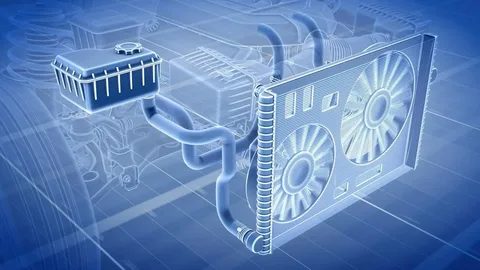
What is the lifespan of my battery?
The service life of a battery also depends on how often and how deeply the battery is discharged. It is also important that the battery is charged correctly and with the right battery charger. With normal use (i.e. not discharging and charging the battery often) a useful life of 5-8 years for gel batteries and AGM batteries is realistic. When using 2 volt NiCd cells, a service life of 10-15 years can be achieved. If the batteries are discharged frequently, this affects the life of the batteries.
The ambient temperature must also be taken into account. The normal ambient temperature is 20°C; higher temperatures reduce battery life.
Does the mounting position of the battery affect the service life?
In principle, the VRLA AGM and GEL batteries can be mounted in any position (except upside down). This is due to the leakage-free nature of these batteries. The battery is designed in such a way that its mounting position does not affect its service life. This also applies to lithium batteries. Wet batteries / NiCd batteries must always be mounted upright, otherwise there is a risk of battery acid escaping.
How long does an AGM battery last?
The lifetime of an AGM battery depends on many factors. First and foremost is the type of AGM battery. There are AGM batteries for stationary use and those for cyclic use. An AGM battery for stationary use is designed for a specific lifetime based on standard conditions including an ambient temperature of 20 °C. The life of an AGM battery for cyclic use is expressed as the number of cycles in relation to the depth of discharge.
Service life AGM battery stationary use
An AGM battery for stationary use is used for backup systems, UPS systems, telecommunications, lifters, toys, etc. In these applications, the battery will not be discharged until power is required. Depending on the number of discharges and environmental factors, the lifespan of an AGM battery for small systems is around 3-5 years. Larger UPS or telecom systems require a Long Life AGM battery (AGM battery with a long service life) with a service life of 10-12 years.
Service life AGM battery cyclical use
AGM batteries for cyclic use differ from stationary batteries in several respects. Cyclic AGM batteries are particularly suitable for repeated intensive discharging and recharging. The functional service life of a cyclic battery is calculated from the number of discharges compared to the depth of discharge. An average cyclic battery achieves more than 600 cycles at 50% DoD (DoD – Depth of Discharge). However, the deeper the discharge, the fewer cycles the battery achieves. If the battery is not discharged over 50%, the service life will be longer. The 12 volt deep cycle battery has a very wide range of applications and is also a very popular battery.
How do I extend the life of my battery?
Battery life depends on a number of factors. Some of these factors are beyond your control; however, there are other factors you can control to maximize battery life.
-
Quality: Your battery system is as strong as the weakest link in the chain. It is therefore very important that all components of the system are of high quality – from the battery equalizer to the connector, from the fuse switch disconnector to the battery charger. By using only high-quality parts for the battery system, you significantly extend the life of your entire battery system.
-
Environment: The environment surrounding the battery system has a significant impact on the performance and service life of the battery system. Temperatures that are too high or too low, for example, impair performance. For example, the ambient temperature of the battery system can be improved with an air treatment system, thereby extending its service life.
-
Charging current: Over or under voltage can be harmful to the battery. The battery will be permanently damaged, affecting capacity. An intelligent battery charger with a trickle charge function always maintains the maximum voltage of the battery without overcharging. A battery monitoring device can be used to avoid over-discharging the battery.
-
Monitoring and maintenance: Timely regular maintenance and ongoing monitoring can prevent problems. If you check the batteries (or have them checked) regularly, you can avoid insidious problems ultimately reducing the service life or your battery system even failing acutely. By using monitoring systems, you can continuously check the condition of the battery and the system. This gives you a good impression of the status of the battery and you know in good time whether appropriate measures need to be taken.

If a battery no longer works, how do I recognize that?
A defective battery is of course very unpleasant. It is therefore advisable to take appropriate measures to extend the life of the batteries if possible. Ultimately, however, there always comes a time when the battery is definitely broken and needs to be replaced. How do you know that a battery is no longer working; and what actions can you take in this case?
Symptoms of a dead battery
If the battery is defective, you will first notice that the performance of the battery is severely limited. The battery runs out much faster than before; and if it’s still working at all, it’s generating electricity that doesn’t adequately meet your energy needs. The battery voltage is constantly too low. A worn out, old battery often charges poorly and only very slowly. If the battery is really dead, it won’t charge at all. In this case, it is also advisable not to try anymore, as this can create potentially dangerous situations. A bloated battery case is also a clearly visible symptom. The bloating of the battery case shows up when the battery is broken inside or is repeatedly charged with an incorrect charger. Excessive pressure has built up in a swollen battery. Once this has happened, the battery must no longer be used. Another symptom is corrosion around the battery terminals. Corrosion can result from leaking battery acid or from the environment in which the battery is located. The corrosion of the battery poles impairs the conductivity; as a result, the battery can no longer provide the desired performance.
What do you do with a dead battery?
It is by no means recommended to continue using a dead battery. A defective battery can no longer cover your electricity needs; however, depending on the defect, continuing to use the battery may also be dangerous. Broken batteries must therefore be handed in at a collection point and exchanged for a new one.
Prevention is better than cure
Of course you want the battery to last as long as possible. There are various measures that contribute to this. Check out our FAQ page under the General heading for some tips on how to extend the life of your battery. In addition to charging your battery from home power, you can also charge your battery from a solar panel. How many watts of solar panels should you buy? You need to evaluate based on your average daily electricity usage. The solar panel calculator is a great tool for how many solar panels and solar cells you need to buy.
Battery specialist Intercel recommends
The right battery type for your application depends on a number of factors. Is the battery frequently used cyclically, does it remain on stand-by for a long time, should the battery be light or must it be able to withstand high temperatures in the long term? Regardless of the application, there is one aspect that must always be met: quality. You want to be able to rely on your battery to provide power for longer periods of time.



